Topics
Category
Era
Commercialization of Taconite
United States Steel’s Extaca plant, 1960. The Oliver Mining Division of USS built the Extaca plant to accompany the Pilotac plant in the development of feasible taconite processing methods.
Though taconite was identified as an iron-bearing rock on the Iron Ranges of northern Minnesota long before the 1950s, it wasn’t until then that it was extracted, processed, and shipped to steel mills on the Great Lakes. As natural ore reserves were diminished, taconite became an alternative source of iron that allowed the Iron Range to continue mining operations in a changing global economy.
The word taconite is derived from the Taconic Mountains of New England, with “taconic” coming from an Eastern Algonquian language—probably Mohican or Lenape. Newton Horace Winchell, Minnesota’s state geologist, created the name in 1892 after he noticed that the rocks in New England looked like the rocks plentiful throughout the Iron Range in Minnesota. The geological structure of taconite, however, is different from the rocks of the Taconics. Taconite has a very low iron content—at best, only 32.5 percent of the rock is iron ore. Since there were many accessible deposits of natural ore with iron contents closer to 60 percent of the rock, taconite was at first passed over in favor of ore that could be shipped directly to smelters without processing.
Taconite was officially documented on the Mesabi Iron Range years before mineable natural ore was found near Mountain Iron. In 1870, prospectors Christian Wieland and Peter Mitchell traveled to the Mesabi Range and found a massive deposit of taconite near current-day Babbitt. They bought the land and incorporated the Mesaba Iron Company in 1882. After the Merritt brothers began mining natural ore on other parts of the Mesabi, Mesaba Iron faded into obscurity until the Mesabi Syndicate was formed in 1915.
A key member of the Mesabi Syndicate was Edward W. Davis—a researcher at the University of Minnesota’s Mines Experiment Station, which was founded in 1914. Researchers at the Minnesota Experiment Station found that the iron in taconite can be accessed by grinding the rock into fine particles and then running them through magnets to separate the iron from the waste rock. Using this information, Davis and the Mesabi Syndicate made an existing camp, the Sulphur Camp, as their headquarters.
The Syndicate mined the taconite and tested it to see if it could consolidate the iron into pieces suitable for smelting. The first product they created was called sinter, which was a rock-like product that had higher iron content than raw taconite. This research led to the incorporation of the Mesabi Iron Company in 1919, which opened the first commercial taconite facility on the Iron Range.
The Mesabi Iron Company was largely unsuccessful. The sinter product couldn’t compete with the natural ore mined elsewhere on the Mesabi Range. In 1924, only two years after shipping its first load of sinter, the Mesabi Iron Company suspended mining. The cost of processing the ore was too high and their main customer—the Ford Motor Company—was dissatisfied with the low-iron product.
In the years that followed, heightened production for the war effort depleted natural ore reserves. The Mines Experiment Station continued to refine the process for taconite production, introducing methods that reduced lost iron in waste rock. As taconite became a viable replacement for natural ore mining, advocates throughout the state pushed for favorable taxation for taconite mining. In 1964, the Minnesota Legislature passed a bill and a statewide referendum was approved, placing the taconite amendment into the Minnesota Constitution.
The first taconite mine was run by the Reserve Mining Company, which shipped its first load in 1955. The pit was located near Babbitt, and the processing facilities were on Lake Superior. Reserve Mining faced controversy when fishermen and conservationists questioned whether depositing tailings into Lake Superior was healthy for fish and humans. This led to a lawsuit that gave the new Environmental Protection Agency regulatory powers in the 1970s.
In the 1980s, the steel industry slowed its production due to global competition. As a result, taconite plants on the Mesabi Range idled, plants were sold to competitors, and some closed for good. Even with a changing steel industry, however, taconite continued to play a major role in sustaining the Iron Range economy.
Bibliography
Davis, E. W. Pioneering With Taconite. St. Paul: Minnesota Historical Society Press, 1964.
——— . “Pioneering With Taconite: The Birth of a Minnesota Industry.” Minnesota History 34, no. 7 (Fall 1955): 269–283.
http://collections.mnhs.org/MNHistoryMagazine/articles/34/v34i07p269-283.pdf
——— . “Taconite: The Derivation of the Name.” Minnesota History 33, no. 7 (Fall 1953): 282–283.
http://collections.mnhs.org/MNHistoryMagazine/articles/33/v33i07p282-283.pdf
Manuel, Jeffrey T. Taconite Dreams. Minneapolis: University of Minnesota Press, 2015.
6F G4141.P3 1946 .S54
Duluth, Missabe, and Iron Range Railway map
Map Collection, Minnesota Historical Society, St. Paul
Description: Duluth Missabe and Iron Range Railway, Missabe and Iron Range Divisions, shipping points, stations, spurs, and mileage, 1946.
Pamphlets Relating to Iron Ore and Taconite Processing
Pamphlet Collection, Minnesota Historical Society, St. Paul
Description: Pamphlets related to the processing of taconite and iron ore. Produced by mining companies like US Steel, Reserve Mining Company, and Erie Mining Company.
Upham, Warren. Minnesota Place Names: A Geographical Encyclopedia. Third edition. St. Paul: Minnesota Historical Society Press, 2001.
Related Resources
Primary
American Iron and Steel Institute. “The Story of Taconite.” Steelways, March 1951.
Davis, E. W. “The Future of the Lake Superior District as an Iron Ore Producer.” Bulletin of the University of Minnesota 23, no. 18 (May 1922).
Duluth, Missabe, and Iron Range Railway. The Missabe Story: 1892–1967. Duluth: Duluth, Missabe, and Iron Range Railway, [1967?].
Edward W. Davis Papers. Minnesota Historical Society, 1883-1973
Manuscripts Collection, Minnesota Historical Society, St. Paul
http://www2.mnhs.org/library/findaids/p1058.xml
Description: A collection of E. W. Davis’ correspondence, reports, research, technical reports, and photographs related to his research performed at the University of Minnesota’s Mines Experiment Station and Mesabi Iron Company.
BC2.1/.M578
Mesabi Iron Company, Company Records, 1914-1953
Archival Material, Minnesota Historical Society, St. Paul
Reports, correspondence, circulars, and articles regarding the Mesabi Iron Company’s operations in northern Minnesota.
Minnesota Historical Society. “The Iron Range in Transition.” Roots 17, no. 3 (Spring 1989).
Pamphlets Relating to Iron Ore Deposits and Iron Mining in Minnesota
Pamphlet Collection, Minnesota Historical Society, St. Paul
Description: Pamphlets related to the geology, geography, extraction, and transportation of iron ore.
United States Steel Corporation. “Iron Ore of the Future.” Published pamphlet. Duluth: United States Steel Corporation, 1963.
——— . “This is Pilotac...An Experimental Taconite Plant.” Published pamphlet. Duluth: United States Steel Corporation, 1955.
Secondary
Lamppa, Marvin. Minnesota’s Iron Country: Rich Ore, Rich Lives. Duluth: Lake Superior Port Cities Press, 2004.
Web
Minnesota Discovery Center.
https://www.mndiscoverycenter.com
Related Images
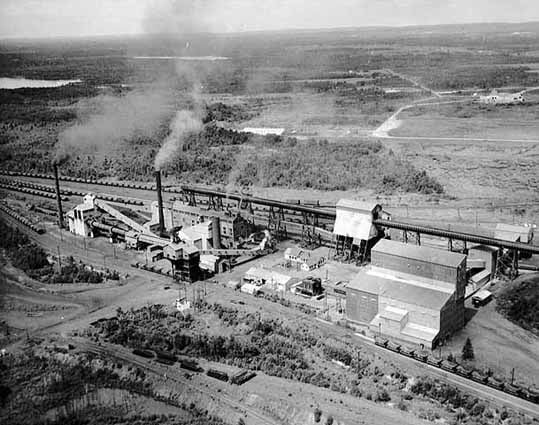
United States Steel’s Extaca plant
United States Steel’s Extaca plant, 1960. The Oliver Mining Division of USS built the Extaca plant to accompany the Pilotac plant in the development of feasible taconite processing methods.
Holding Location
Articles
More Information
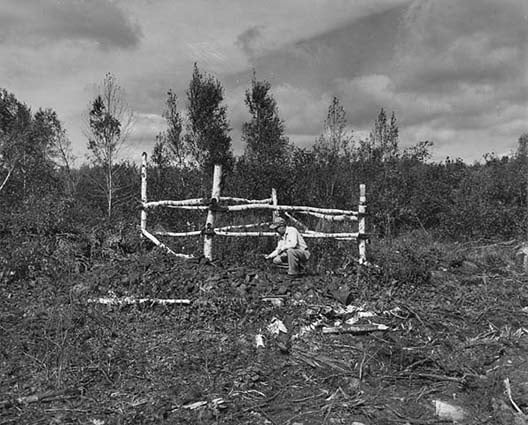
Peter Mitchell’s test pit near Babbitt
Peter Mitchell’s taconite-ore test pit near Babbitt, 1960. Mitchell looked for ore in the 1880s as a member of the Ontonagon Syndicate.
Holding Location
Articles
More Information

Mines Experiment Station
Mines Experiment Station, 1923. The station at the University of Minnesota-Twin Cities was key in the commercialization of taconite under the direction of E. W. Davis.
Holding Location
Articles
More Information
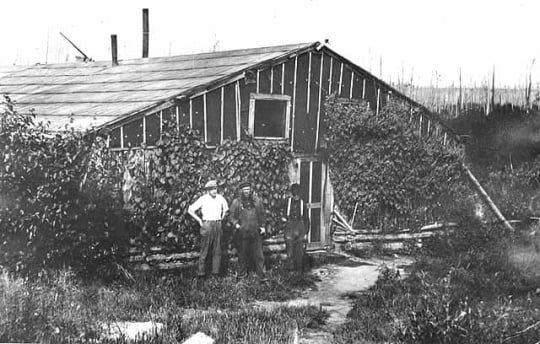
Cookhouse at Sulphur Camp
Cookhouse at Sulphur Camp, 1916. Sulphur Camp was the location of early taconite research, near current-day Babbitt, Minnesota. Peter Mitchell, a prospector from Michigan, explored the area and found that taconite was plentiful on this part of the Iron Range.
Holding Location
Articles
More Information
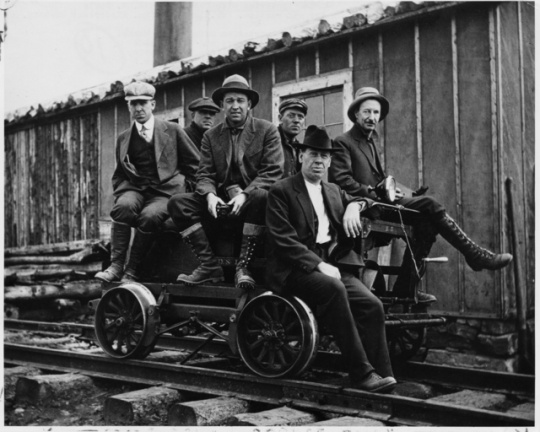
Taconite prospectors at Sulphur Camp
Taconite prospectors at Sulphur Camp, ca. 1916. To access Sulphur Camp, prospectors would have to take a rail cart, pictured here, from Mesaba Station. Seated to the far left is E. W. Davis.
Holding Location
More Information
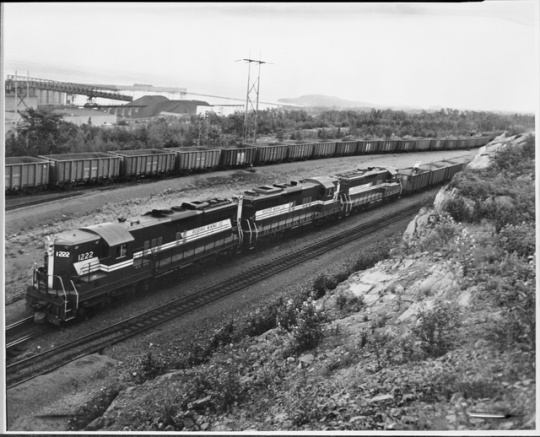
First train of taconite to Silver Bay
First Train of Taconite to Silver Bay, Minnesota, 1955. The first train of taconite from Reserve Mining Company’s Peter Mitchell Pit was shipped to the concentration facilities in Silver Bay in 1955.
Holding Location
More Information
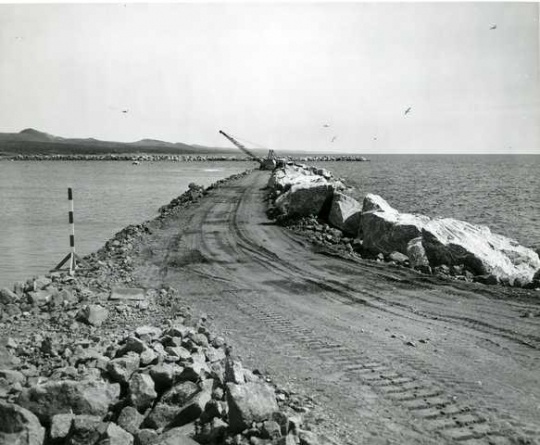
Taconite Harbor
Taconite Harbor, 1956. Taconite Harbor was built to ship ore mined and processed at Erie Mining Company in Hoyt Lakes to steel mills on the Great Lakes. Concentrated ore was shipped from Hoyt Lakes to Taconite Harbor on a private railroad.
Holding Location
Articles
More Information

Hoyt Lakes under construction
Hoyt Lakes under construction, 1955. Hoyt Lakes was built to accommodate workers and mine staff by the Erie Mining Company—the Iron Range’s second major taconite facility.
Holding Location
Articles
More Information
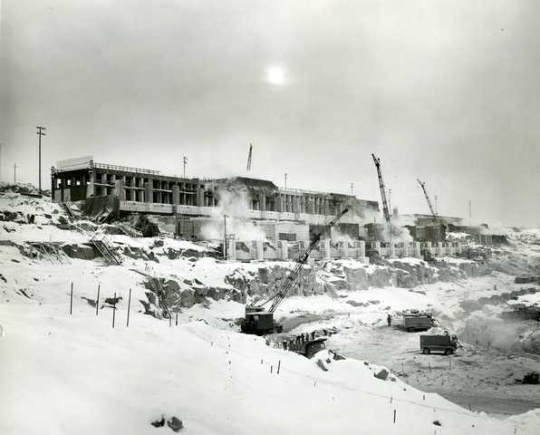
Erie Mining Company’s Concentrator Building under construction
Erie Mining Company’s Concentrator Building under construction, ca. 1954. The Concentrator Building—where taconite is finely ground and iron ore is removed from the rock—was built near Hoyt Lakes around 1954.
Holding Location
Articles

Taconite Amendment bumper sticker
Taconite Amendment bumper sticker, 1964. To promote a “yes” vote on the taconite amendment to rewrite the tax structure that affected taconite operations, advocates made bumper stickers to advertise their cause.
Holding Location
Articles
More Information
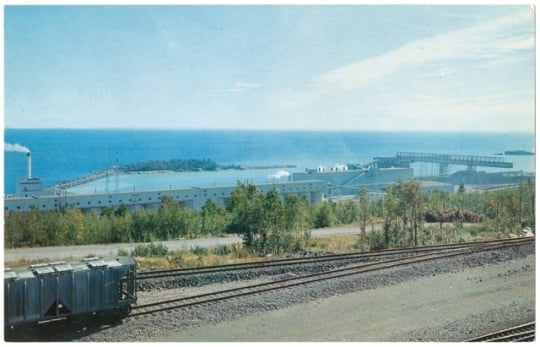
View from the north hillside showing the E. W. Davis Works of the Reserve Mining Company and the harbor
View from the north hillside showing the E. W. Davis Works of the Reserve Mining Company and the harbor, c.1965.
Holding Location
More Information
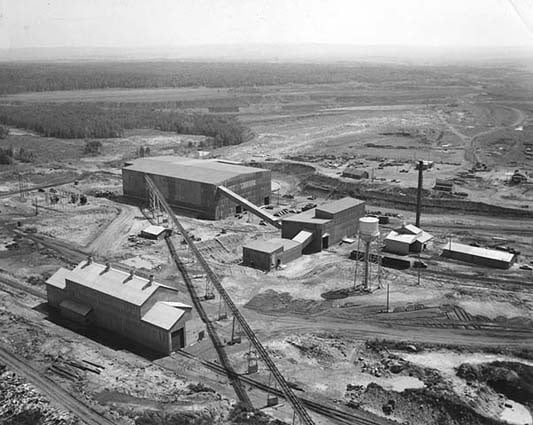
United States Steel’s Pilotac plant
United States Steel’s Pilotac plant, 1955. The Oliver Mining Division of USS built the Pilotac plant to develop taconite processing methods. Minntac was the result of these efforts.
Holding Location
Articles
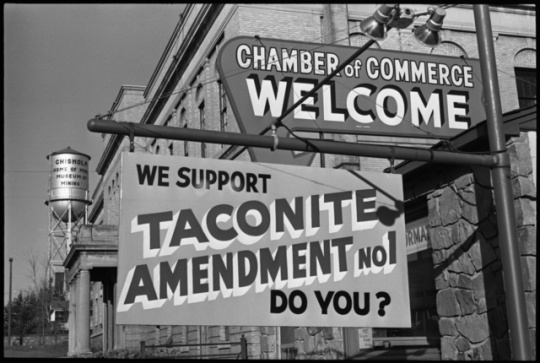
Sign in support of Taconite Amendment No. 1
A sign outside a business promoting a “yes” vote on the taconite amendment, 1964.
Holding Location
Articles
More Information
Related Articles
Turning Point
On September 13, 1956, the Reserve Mining Company dedicates its E. W. Davis Works plant in Silver Bay, recognizing a man who pioneered taconite’s commercialization and ushering in its era of mining on the Mesabi Iron Range.
Chronology
1870
1882
1913
1916
1919
1922
1924
1945
1953
1972
1977
1986
2001
2009
Bibliography
Davis, E. W. Pioneering With Taconite. St. Paul: Minnesota Historical Society Press, 1964.
——— . “Pioneering With Taconite: The Birth of a Minnesota Industry.” Minnesota History 34, no. 7 (Fall 1955): 269–283.
http://collections.mnhs.org/MNHistoryMagazine/articles/34/v34i07p269-283.pdf
——— . “Taconite: The Derivation of the Name.” Minnesota History 33, no. 7 (Fall 1953): 282–283.
http://collections.mnhs.org/MNHistoryMagazine/articles/33/v33i07p282-283.pdf
Manuel, Jeffrey T. Taconite Dreams. Minneapolis: University of Minnesota Press, 2015.
6F G4141.P3 1946 .S54
Duluth, Missabe, and Iron Range Railway map
Map Collection, Minnesota Historical Society, St. Paul
Description: Duluth Missabe and Iron Range Railway, Missabe and Iron Range Divisions, shipping points, stations, spurs, and mileage, 1946.
Pamphlets Relating to Iron Ore and Taconite Processing
Pamphlet Collection, Minnesota Historical Society, St. Paul
Description: Pamphlets related to the processing of taconite and iron ore. Produced by mining companies like US Steel, Reserve Mining Company, and Erie Mining Company.
Upham, Warren. Minnesota Place Names: A Geographical Encyclopedia. Third edition. St. Paul: Minnesota Historical Society Press, 2001.
Related Resources
Primary
American Iron and Steel Institute. “The Story of Taconite.” Steelways, March 1951.
Davis, E. W. “The Future of the Lake Superior District as an Iron Ore Producer.” Bulletin of the University of Minnesota 23, no. 18 (May 1922).
Duluth, Missabe, and Iron Range Railway. The Missabe Story: 1892–1967. Duluth: Duluth, Missabe, and Iron Range Railway, [1967?].
Edward W. Davis Papers. Minnesota Historical Society, 1883-1973
Manuscripts Collection, Minnesota Historical Society, St. Paul
http://www2.mnhs.org/library/findaids/p1058.xml
Description: A collection of E. W. Davis’ correspondence, reports, research, technical reports, and photographs related to his research performed at the University of Minnesota’s Mines Experiment Station and Mesabi Iron Company.
BC2.1/.M578
Mesabi Iron Company, Company Records, 1914-1953
Archival Material, Minnesota Historical Society, St. Paul
Reports, correspondence, circulars, and articles regarding the Mesabi Iron Company’s operations in northern Minnesota.
Minnesota Historical Society. “The Iron Range in Transition.” Roots 17, no. 3 (Spring 1989).
Pamphlets Relating to Iron Ore Deposits and Iron Mining in Minnesota
Pamphlet Collection, Minnesota Historical Society, St. Paul
Description: Pamphlets related to the geology, geography, extraction, and transportation of iron ore.
United States Steel Corporation. “Iron Ore of the Future.” Published pamphlet. Duluth: United States Steel Corporation, 1963.
——— . “This is Pilotac...An Experimental Taconite Plant.” Published pamphlet. Duluth: United States Steel Corporation, 1955.
Secondary
Lamppa, Marvin. Minnesota’s Iron Country: Rich Ore, Rich Lives. Duluth: Lake Superior Port Cities Press, 2004.
Web
Minnesota Discovery Center.
https://www.mndiscoverycenter.com














